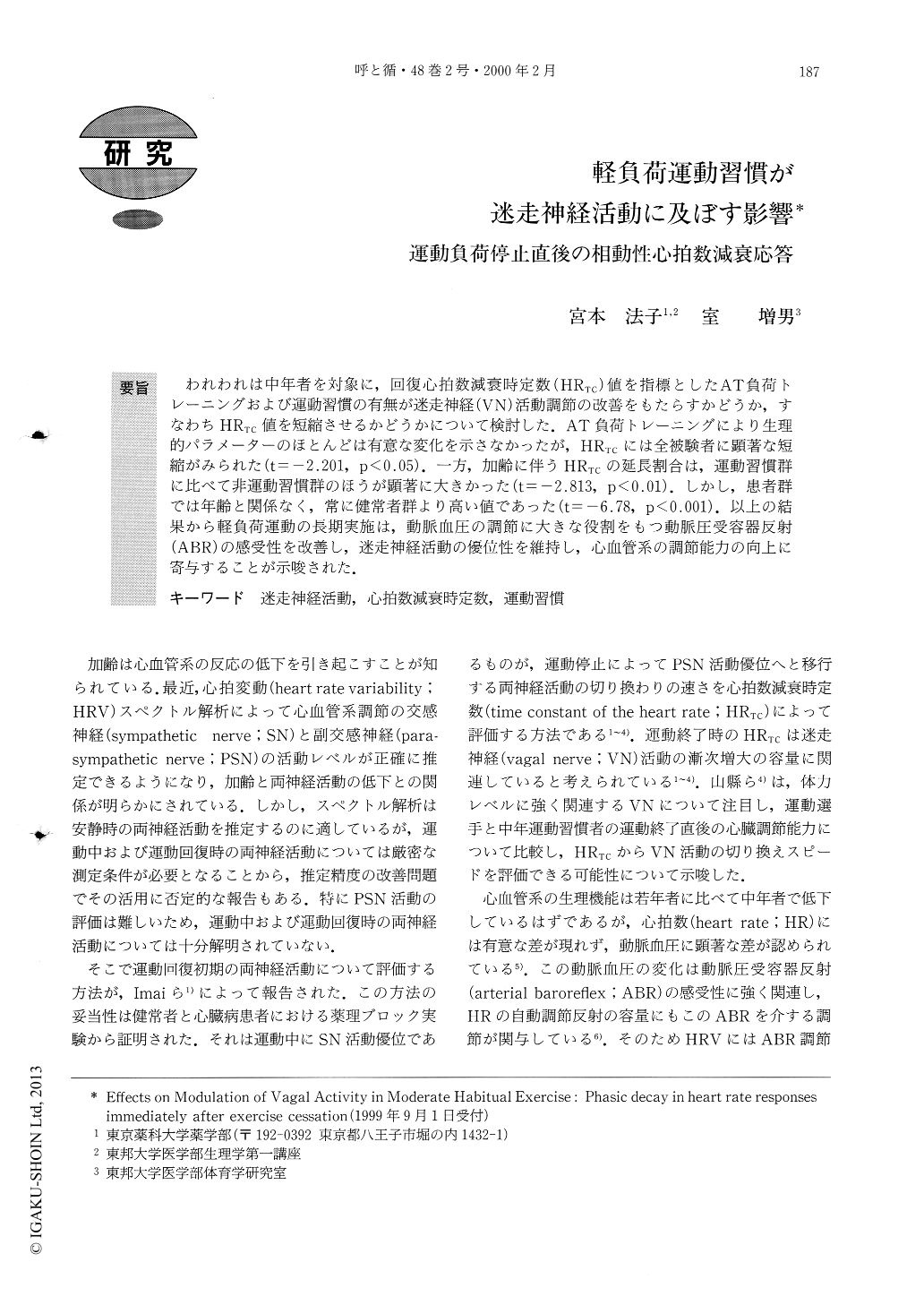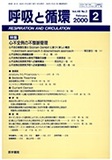Japanese
English
- 有料閲覧
- Abstract 文献概要
- 1ページ目 Look Inside
われわれは中年者を対象に,回復心拍数減衰時定数(HRTC)値を指標としたAT負荷トレーニングおよび運動習慣の有無が迷走神経(VN)活動調節の改善をもたらすかどうか,すなわちHRTC値を短縮させるかどうかについて検討した.AT負荷トレーニングにより生理的パラメーターのほとんどは有意な変化を示さなかったが,HRTCには全被験者に顕著な短縮がみられた(t=−2.201,p<0.05).一方,加齢に伴うHRTCの延長割合は,運動習慣群に比べて非運動習慣群のほうが顕著に大きかった(t=−2.813,p<0.01).しかし,患者群では年齢と関係なく,常に健常者群より高い値であった(t=−6.78,p<0.001).以上の結果から軽負荷運動の長期実施は,動脈血圧の調節に大きな役割をもつ動脈圧受容器反射(ABR)の感受性を改善し,迷走神経活動の優位性を維持し,心血管系の調節能力の向上に寄与することが示唆された.
We investigated the effect of anerobic threshold (AT)training and that of habitual aerobic exercise (walkingmore than 10,000 steps a day) on the dynamic heart ratereactivity. In six healthy subjects, anerobic threshold(AT) training (pedaling exercise on bicycle ergometer,30 min a day, 3-4 times a week, 12 weeks) was perfor-med. After the training, heart rate, systolic and diastolicblood pressure at rest did not change while the timeconstant of the heart rate recovery (HRTC) immediatelyafter cessation of 6 min-long pedaling exercise,significantly decreased in all six subjects. The HRTC wasmeasured also in three groups of middle aged (30-69years old) male and female volunteer subjects, thosewith exercise habit (n=43), those without exercisehabit (n=48), and patients suffering from diabetesmellitus or hypertension but under strict medical control(n=18). The HR, was at much higher level in thepatient group than in other two groups. The HRTCshowed positive correlation with age in each subjectgroup (the correlation was statistically significantexcept for the patient group). The correlationcoefficient was significantly smaller in the group withexercise habit than other two groups. It is suggestedthat both AT-level training and habitual exerciseimprove reactivity of vagal and arterial baroreflexsystems.

Copyright © 2000, Igaku-Shoin Ltd. All rights reserved.


